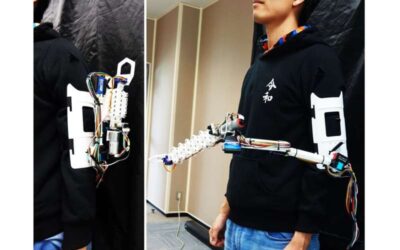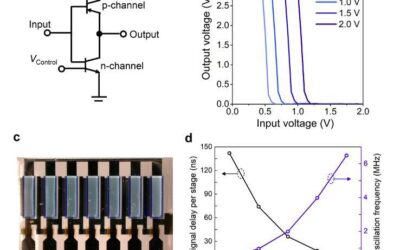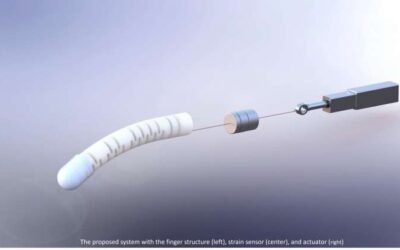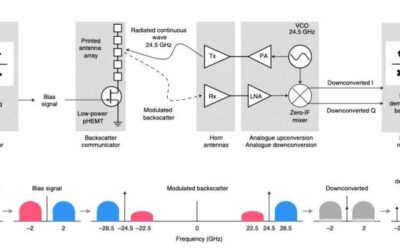Researchers at Tianjin University of Technology in China have recently developed a new brain network-based framework for recognizing the emotions of deaf individuals. This framework, presented in a paper published in IEEE Sensors Journal, is specifically based on...
Engineering
Dynamic speckle holography: A highly effective optical technique that combines imaging and scattering
Researchers at Harvard University and China University of Petroleum recently developed dynamic speckle holography (DSH), a new technique to measure three-dimensional (3D) maps of displacements that combines imaging and scattering approaches. This technique, presented...
AugLimb: A compact robotic limb to support humans during everyday activities
Researchers at Japan Advanced Institute of Science and Technology and University of Tokyo recently developed AugLimb, a compact robotic limb that could support humans as they complete a variety of tasks. This new limb, presented in a paper pre-published on arXiv, can...
A strategy to fabricate metal-organic framework membranes for the separation of hydrocarbons
The separation of light hydrocarbon mixtures is among the most important petrochemical and industrial processes. This process is currently regarded as highly energy intensive, as it has so far been carried out using conventional techniques, such as cryogenic...
A supra-photothermal catalyst inspired by the greenhouse effect
Over the past few decades, scientists worldwide have developing a variety of techniques and technologies that can convert carbon dioxide (CO2) into fuel using solar energy. This would ultimately be highly valuable, as it would diminish human reliance on fossil fuels...
Researchers realize vertical organic permeable dual-based transistors for logic circuits
Integrated circuits (ICs) based on organic transistors have many valuable applications, for instance, in the fabrication of paper-like displays or other large-area electronic components. Over the past few decades, electronics engineers worldwide have developed a...
A tactile sensing mechanism for soft robotic fingers
In recent years, numerous roboticists worldwide have been trying to develop robotic systems that can artificially replicate the human sense of touch. In addition, they have been trying to create increasingly realistic and advanced bionic limbs and humanoid robots,...
An autonomous system to assemble reconfigurable robotic structures in space
Large space structures, such as telescopes and spacecraft, should ideally be assembled directly in space, as they are difficult or impossible to launch from Earth as a single piece. In several cases, however, assembling these technologies manually in space is either...
Researchers realize a printed millimetre-wave modulator and antenna array for backscatter communications
The number of smartphones, laptops and other devices connected to the internet is continuously increasing. This expanding network of connected devices, also known as the Internet of Things (IoT), entails the transfer of large amounts of data over the internet.
Home EV Charging and “Energy Independence”: Meet myenergi Lead Engineer Robin Richard
Pessimism about renewables, Meet Robin Richard, the lead engineer for myenergi, a company hoping to make renewable infrastructure accessible to all.










